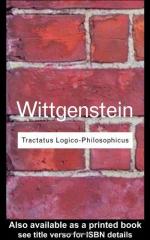|
This section contains 7,826 words (approx. 27 pages at 300 words per page) |

|
SOURCE: "Wittgenstein, Nonsense, and Lewis Carroll," in Ludwig Wittgenstein: The Man and His Philosophy, edited by K. T. Fann, 1967. Reprint by Humanities Press, 1978, pp. 315-35.
Pitcher is an American author and educator. In the following essay, originally published in 1965, he relates Wittgenstein's writings on linguistic nonsense to Lewis Carroll's use of nonsense language.
The philosopher Ludwig Wittgenstein was always concerned, one way or another, about nonsense; and much more so in his later writings than in the early ones. Nonsense is construed in the Tractatus in a narrow technical way: a combination of words is nonsensical when it cannot possibly be understood, because no sense is or can (except trivially) be accorded it. As an example of a nonsensical question, Wittgenstein gives that of "whether the good is more or less identical than the beautiful." He thinks that "most of the propositions and questions to be found in...
|
This section contains 7,826 words (approx. 27 pages at 300 words per page) |

|


